Two of the biggest-ever space projects began their journey of discovery this summer. In July, theJames Webb Space Telescope sentits first imagesbackto Earth. Then in late August, the Space Launch System rocket and Orion module were readied for the maiden, uncrewed test flight of the Artemis programme.
But as these landmark missions take their first steps, their successors are already lining up. Over the last decade, NASA’s Innovative Advanced Concepts (NIAC) programme has funded research into novel space tech that encourages inventors to take advantage of new technologies and break away from the traditional ideas of what a spacecraft should be.
At the same time, an ever-increasing number of new spacefaring nations and private companies are taking chances on new ideas. With results ranging from the innovative to the outright bizarre, herewetakea look at what the spacecraft of tomorrow might look like.
A new epoch of spaceflight is upon us. Here, we explore the next generation of spacecraft that will take us to parts of our Solar System that we’ve never seen before.
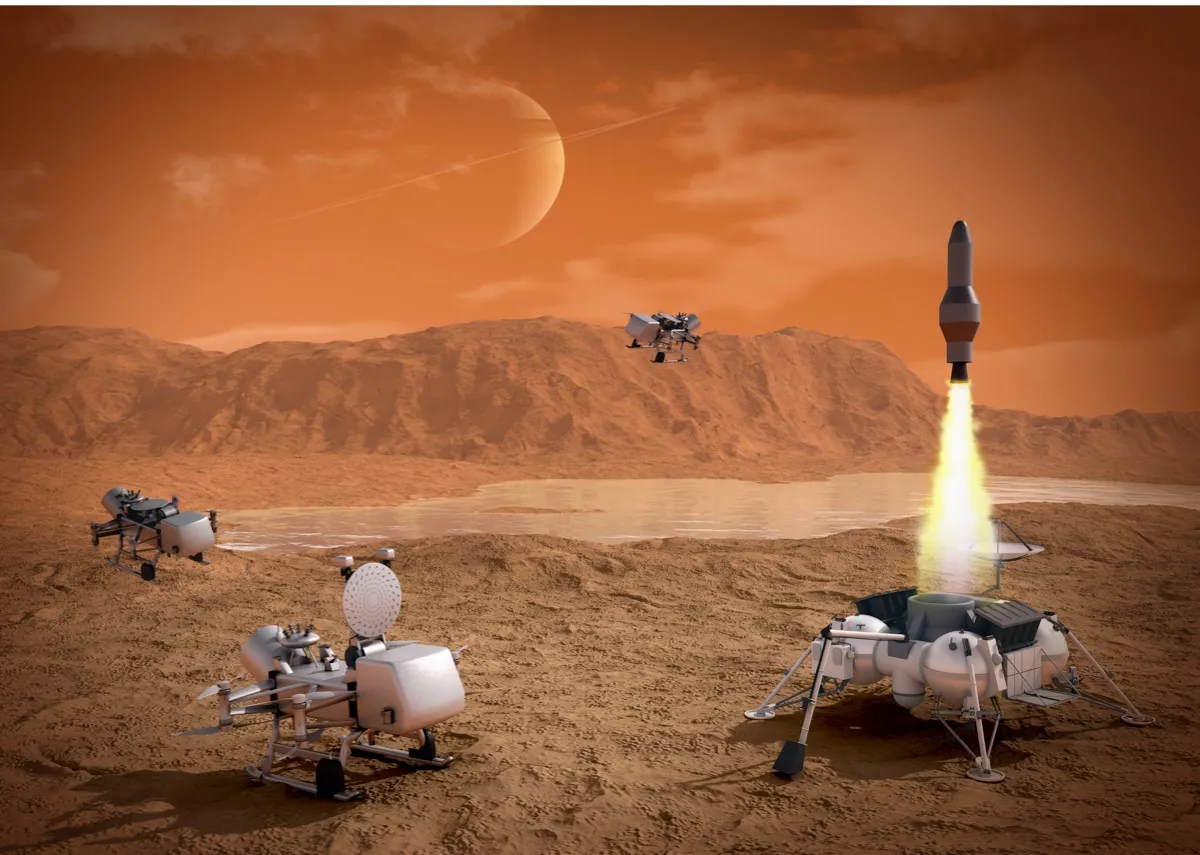
Searching the skies
If you want to cover a lot of ground, the best way is to take to the sky
On 19 April 2021, the Ingenuity Mars Helicopter Scout became the first spacecraft to make a controlled powered flight on the surface of another planet. The drone-like rotorcraft hitched a rideaboard Perseverance, NASA’s most-advanced rover that’s armed with heavy robot arms, instruments and power-hungry ovens that can bake and analyse soil samples. Conversely,Ingenuity, which only has a mass of 1.8kg, carriesjusttwo cameras.
For what it lacked in instrumentation, Ingenuity made up for in range. While Perseverance had to spend weeksskirtingaroundthe outside ofa boulder-strewn field, Ingenuity flew over it in minutes and was able to scout the path ahead. With such proof of potential, there’s no doubt that while Ingenuity might have been the first such flight, it won’t be the last.
Even before Ingenuity launched, NASA was already planning on sending its successor, Dragonfly, to Saturn’s moon, Titan,in 2027. Thismoon is simultaneously incredibly familiar and totally alien. Like our planet, it has a nitrogen-rich atmosphere at an Earth-likepressure,whilethe terrain is shaped by mountains and liquid lakes. Only it’s -180ºC. Instead of rock, the mountains are ice, and the lakes are filled not with water, but liquid methane and ethane. Hydrocarbons such as these are thought to have formed the building blocks of life here on Earth. Could they have done so on Titan as well?
Read more about Saturn:
- Why does Saturn have rings?
- Saturn's iconic rings and tilt may have been formed by the destruction of an ancient moon
To have a chance of answering these questions, Dragonfly will have significantly more scientific power than its Martian predecessor. The increased lift of its eight rotors,combined with Titan’s thick atmosphere and low gravity of 1.4m/s2, meansthatDragonfly can have a mass of 450kg – enough to carry a heavy radio thermal generator and still have a significant science payload.
Dragonfly will have spectrometers to analyse both the atmosphere and soil, as well as meteorological sensors and the all-important cameras. These will helpthe craft tonavigate as it fliesfor more than175km acrossTItan’ssurface – double the distance of all the Martian rovers combined – in just 2.7 years. The images they send back will be the best ever taken of the moon’s surface, and will finally reveal what’s hiding among the hills and lakes of Titan.
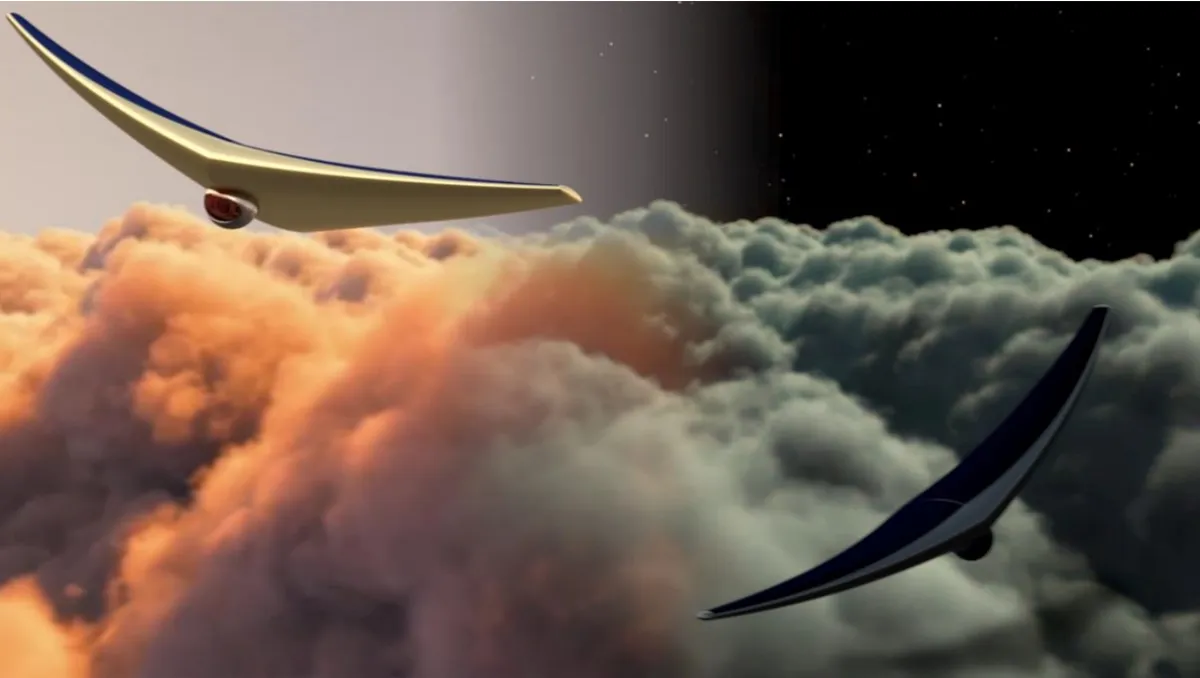
Cruising on stormy skies
Inflatable manta rays could scull through the acid clouds of Venus
In 2020, a group led by Cardiff University announced the potential discovery of phosphine on Venus. Here on Earth, the gas is given off by acid-loving bacteria, so could similar microorganisms be living in the sulphuric clouds of Venus? Unfortunately, a flurry of follow-up observationshavecast doubt as to whether phosphine is actually present, but it’s undeniably put Venus back at the top of people’s planetary wishlists.
Venus’s cloudssit at an altitude ofaround 50 to 70km. Though Venus’s surface pressure is 92 times that of Earth, atan altitude of50km it’s around one atmosphere– the same pressure as sea level on Earth –meaning a helium-filled balloon could easily carry a payload of scientific instruments through the air. In fact, in 1985, the Soviet Union did just that when they dropped Vega 1 and 2 onto the planet’s nightside. For two days, they were thrown around the turbulent skies, before the 250km/h wind pushed them round to the dayside and they burst in theheat of the Sun.
Read more about Venus:
- Venus has at least 37 recently active volcanoes
- Could we live in airships in the atmosphere of Venus?
Since then, engineers have been searching for ways to better navigate the stormy skies of Venus. A rotorcraft would be ripped apart, but a new concept from the Crashworthiness for Aerospace Structures and Hybrids (CRASH) Lab at the University at Buffalo, New York,couldoffera solution. In 2022,the lab wasgiven fundingby NIACto develop the Bioinspired Ray for Extreme Environments and Zonal Exploration (BREEZE), an inflatable spacecraft inspired by a manta ray.
“BREEZE’s articulated wings are based on the ray musculoskeletal system,using an intertwined, redundant actuation network that helps reduce the chance of total system failure,”saysDr Javid Bayandor, who worked on the project. This would gently twist the wings of the craft allowing it to manoeuvre along the air currents like a ray rides ocean currents.
“The bioinspired propulsion provides the light BREEZE flier with unique controllability. [This is]unlike balloon concepts, the flight paths of which are determined purely by wind direction, or conventional propulsion with large fuel consumption rates,”says Bayandor.“BREEZE is one of the first concepts offered to circumnavigate Venus from within its atmosphere and survive, making measurements on the darkside of the planet.”
Circling the planet once every four to six days, it would be able to track weather patterns, map out the surface using radar and perhaps even sniff out biomarkers (including the elusive phosphine). As it’s inflatable, it’s highly compact, sotwo or three could launchfrom the same entry vehicleat once, meaning a squadron of BREEZEs could one day floatalong the winds of Venus.
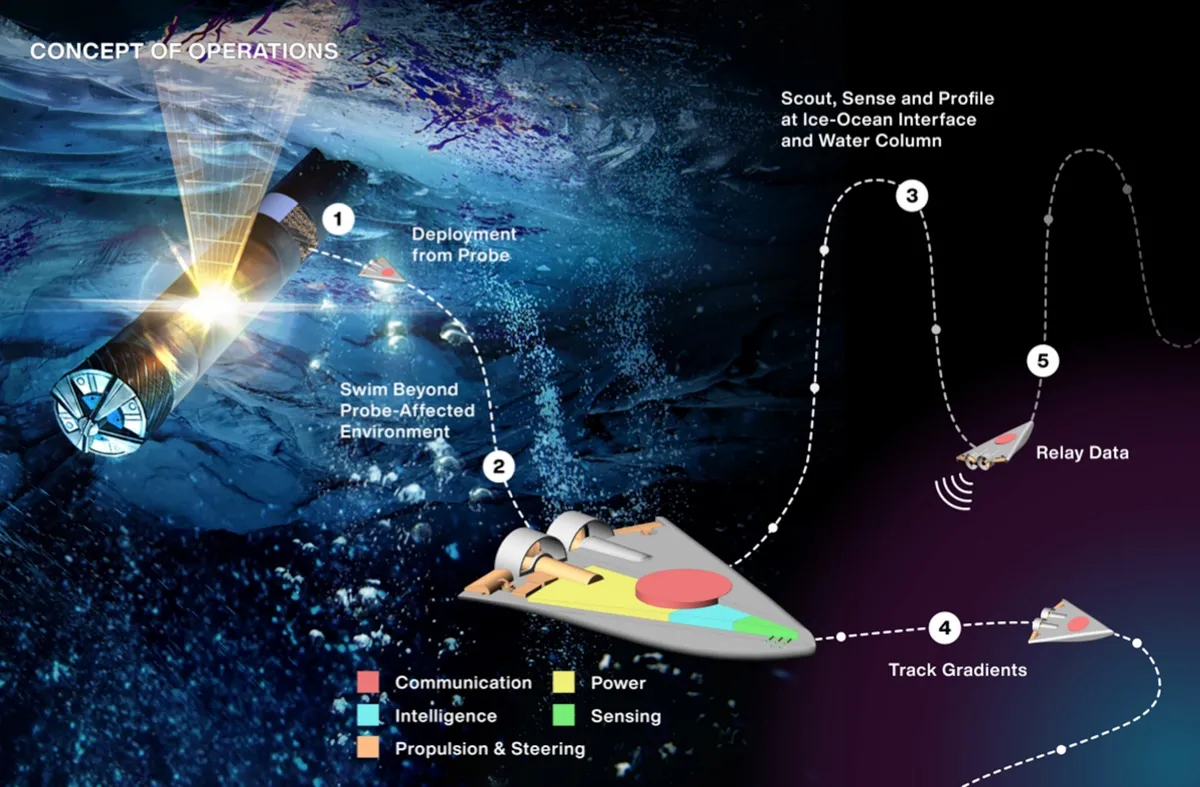
In deep, dark depths
Piercing through the crust of Europa to explore its hidden ocean
Jupiter’s moon Europa hides a secret under its icy crust – a liquid water ocean. Could there be alien life swimming in the deepest depths of this quiet moon? Europa already has two upcoming spacecraft bound towards it – ESA’s Jupiter Icy Moon Explorer (JUICE) and NASA’s Europa Clipper. Both of these will examinethe moonfrom orbit when they arrive in the 2030s, but the real hope is to one day land on the surface and explore the ocean beneath.
The first step, however, is getting through the ice, which can measure anywhere from a few hundred metres to tens of kilometres. One concept usesheated probes shaped like giant needles to melt through the ice. MicrobiologistDrJill Mikucki from the University of Tennessee has been using her experience in finding microorganisms inside glaciers to test how feasible this might be on another world.
“There are many challenges when drilling through an icymoon,”says Mikucki.“The ice is much colder than on Earth, and how do you supply enough power? Testing melt probes on Earth’s coldest ice can help scientists and engineers better conceptualise their parameters. From my experience in Antarctica and other icy places on Earth,a lot can go wrong when you’re flying blind in an ice hole!”
Read more about Jupiter:
- Mystery of Jupiter's polar cyclones solved using ocean physics
- James Webb Space Telescope releases spectacular images of Jupiter's Great Red Spot
Most concepts for an extraterrestrial ice-diving robot, known as a cryobot, use the heat of a radioactive source to melt the ice. Othersproposeusing drills or lasers to cut through the ice. However, most of these have focused on getting through the ice, rather than on what to do once they got there.
Not so the SensingWith Independent Micro-swimmers (SWIM) project, from NIAC. SWIM would stowawayaboard a cryobot, then deploy a swarm of 10cm-long, free-swimming robots to navigate the ocean.
“A swarm of robots can cover a larger volume of water compared to a single vehicle,”saysDr Azadeh Ansari from the Georgia Institute of Technology, part of the SWIM team.“If one or a few robots fail, the mission can still be completed.”
As Europa is in Jupiter’s strong magnetic field, thebotscould scavenge all the power they need by creating electromagnetic currents, extending their lifetimes away from the mothership.The SWIM researchers are interested in measuringthe temperature, pressure, pH and salinity of the water, but also want to adda chemical gravimetric sensor to detect big molecules that could be indicative of life signs.
Now, the SWIMteam isusing 3D-printed prototypes to testthebots’steering, propulsion, commsand sensing systems, but one day a swarm of similar robo-space-fish could beswimmingthrough Europa’s oceans.
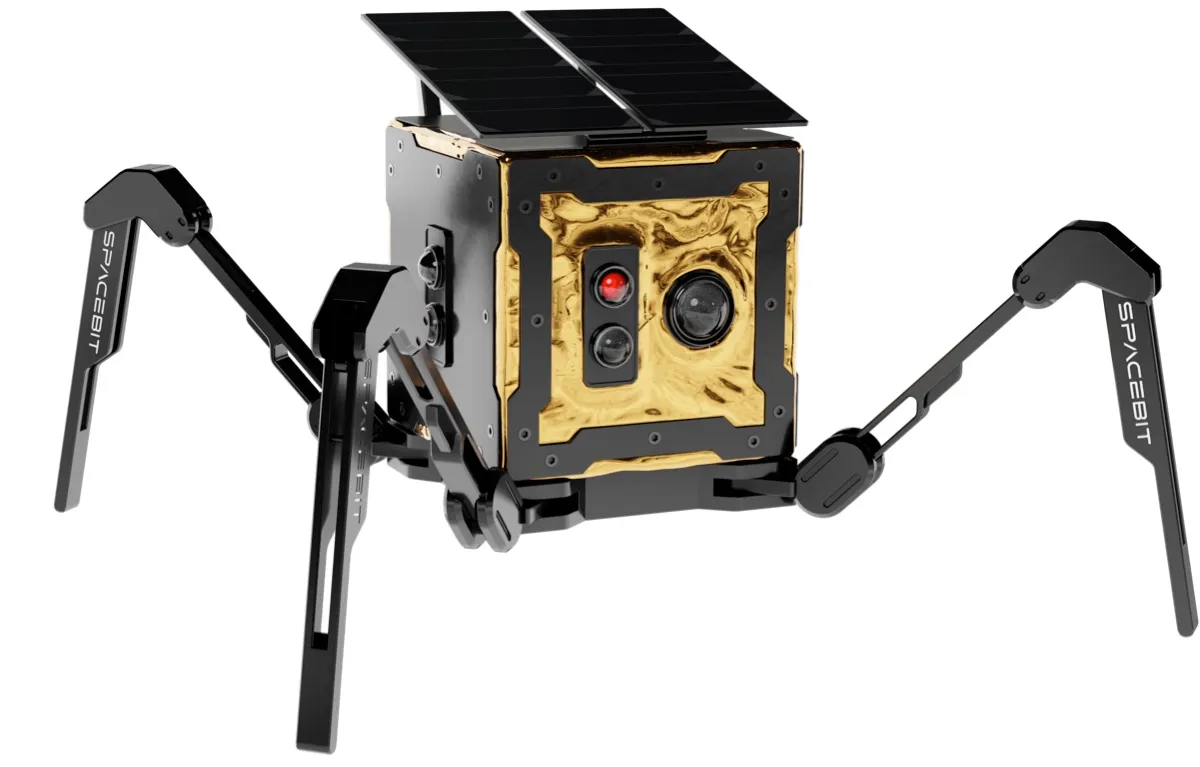
Into the shadows
Life on other planets is likely to be found underground, where there is shelter from radiation
In the past, landers on both the Moon and Mars have stayed near the equator, where there’s plenty of sunlight for their solar panels. Now, however, attention has moved to the darker shadows of ourclosestneighbours. The lunar south pole has craters where the Sun never reaches the bottom, potentially allowing for water ice to survive, whileMartian cave systems could shelter microorganisms from damaging radiation. These craters and cavesmight one day serve as foundations for a permanent human base.
Exploring these new terrains requires a new type of vehicle, as the rovers that have so far traversed the Moon and Mars are ill-suited to a cave’s rugged terrain.Robotswith legshave been suggested since the early days of the Space Age, but are only now becoming technologically feasible. In fact, the first lunar‘scuttler’robot, the spider-like Asagumo from UK-based company Spacebit,is due to take its first steps on the lunar surface within the next year.
Meanwhile, the BRAILLE team (Biological and Resource Analog Investigations in Low Light Environments) at NASA’s Jet Propulsion Laboratory are developing the tools such a robo-explorer will need. Thebotswill need to be autonomous, becausethe potential of losing communications, not to mention the minute-long lag time between Earth and Mars,makes direct human control impossible. The team use NeBula autonomy softwarethat allows a robot to explore environments and adapt to unexpected scenarios without the need for human oversight.
Read more about Mars:
BRAILLE simulated a mission at the Lava Beds National Monument in California,using the software on a pack of Boston Dynamics SPOT robots. The first robot was armed with LiDAR to map out the complex tunnelsandidentify interesting targets. A second explorer took a closer look at these, even swabbing samples from the walls.Athird SPOT remotely analysed the chemical makeup of the targets. During the test, the trio climbedup rough surfaces that would stop a traditional rover in its tracks, and navigated narrow passagesthateven a human might struggle with.
But even these nimble explorers could be stumped bydeeper crevasses.This is whereaNIAC project, ReachBot, could help out.Thisrobot uses extendable boom arms with manipulators on the end to shimmy up and down narrow passageways.
Theircompactable design means several could be transported together, allowing them to help each other out, pushing against each other to gain leverage. These could be dispatched into tight caves, coming back withsamples that would normally be out of reach. It would be easy to carry half a dozen on the backs of Spacebit or BRAILLE descendants, ready to explore every nook and cranny of the rocky surfaces of our Solar System.
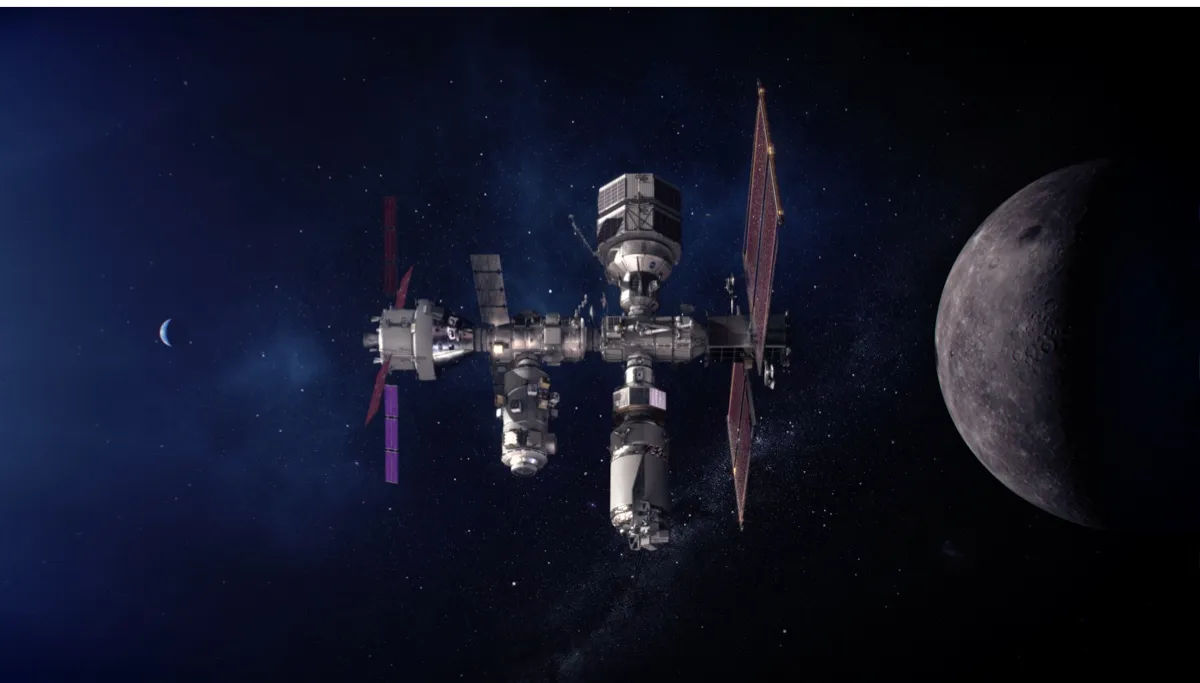
Expanding into the Solar System
Trying to cram a kilometre-sized structure into a metre-wide rocket is no easy feat
In December 1972, Apollo 17 flew to the Moon, marking the last time humans ventured beyond the bounds of low-Earth orbit. At least, for now. In August, Artemiswas being readied for its firstuncrewed testlaunch ahead ofa future lunar landing. Over the coming decade, NASA will lead a team ofglobal partners to build the Lunar Gateway, a space station that will act as a waystation to the Moon’s surface and perhaps even on to Mars.The Gateway – like the ISS andChina’sTiangong SpaceStation before it – is being built piece-by-piece from what can fit in a rocket.
But for interplanetary flight, you need bigger ships. The lack of gravity over a long-term trip through space causes muscle atrophy, heart problems, bone loss, eyesight degradation and immunosuppression. The solution is to build spacecraft that spin to simulate gravity (think2001: A Space Odyssey).
The trouble is, to spin astronauts around without making them sick you need a craft with arms that are up to one kilometre in length. That would take dozens of costly, tricky traditional launches to build. But aNIAC concept fromDr Zac Manchester of Carnegie Mellon University could potentially do it in justonelaunch.
Read more about space travel:
- Can space exploration be environmentally friendly?
- Why does China want to build a kilometre-long spacecraft?
“Our goal is to make a structure that can fit inside a single rocket fairing – which limits us to just a few metres across – and can expand out toakilometrelonginorbit,”says Manchester.“It turns out structures that only need to work in space don’t have to be very stiff or strong because the forces acting on them are very weak. In our case, the large structures we’re designing would launch folded up, so they would only need to withstand large forces in their folded configuration.”
He has been investigating structures made from interconnected sets of scissor linkages to create complex shaped structures that expand up to 150 times their original size. Such structures require thousands of moving parts, which issomething normally seen as foolhardy in spacecraft, given you can’t just send out a mechanic if something gets stuck.
“This is one of the most difficult challenges in the project, and we worry a lot about mechanisms jamming during deployment,”says Manchester. One of the key parts of his current work on the project is perfecting the design to minimise the risk from any manufacturing errors.“We’re thinking about ways to strategically engineer compliance [the opposite of stiffness] into the structure to mitigate the risk of jamming.”
Jack-in-the-box spacecraft could soon be popping up across low-Earth orbit, ready to sail on to other planets.
- This article first appeared in issue 382of BBC Science Focus – find out how to subscribe here
